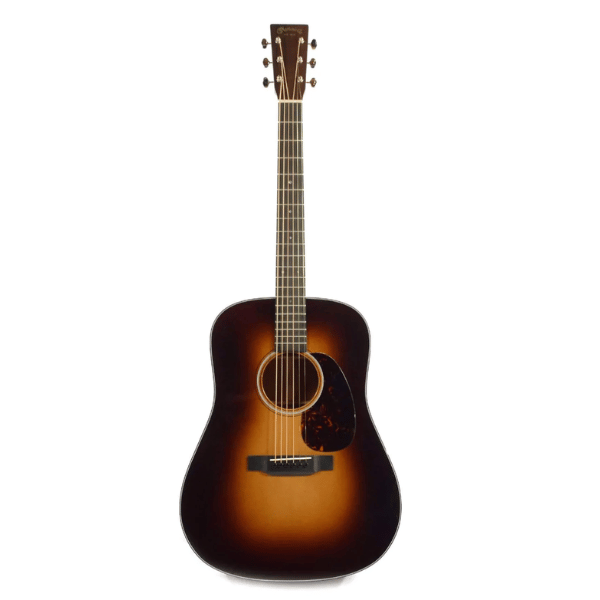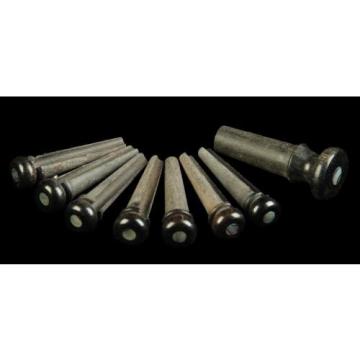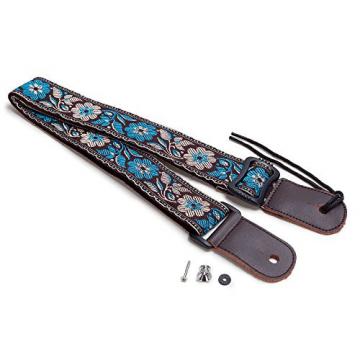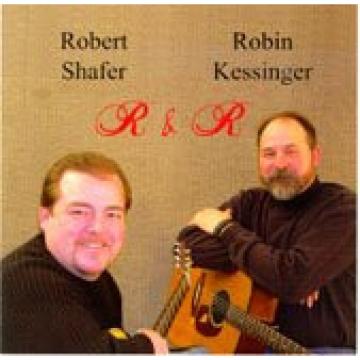Home> Company News> The Evolution of Martin D18 Guitars: A Historical Overview
- AddressShan Dong Province,China
- Factory AddressShan Dong Province,China
- Phone(Working Time)86-13305315989
- Phone(Nonworking Time)86-13305315989
The Evolution of Martin D18 Guitars: A Historical Overview
2023-05-06 15:33:44Martin D18 guitars are among the most revered and sought-after acoustic guitars in the world. Known for their rich sound, exceptional playability, and unmistakable aesthetic, Martin D18 guitars have been an integral part of popular music for decades. In this article, we will take a closer look at the history of Martin D18 guitars, their evolution over time, their importance in popular music genres, and the notable changes in materials and design that have occurred since their introduction in the 1930s.
Overview of the Martin D18 Model The Martin D18 is a dreadnought-style acoustic guitar that was first introduced by the Martin Guitar Company in the 1930s. Like other dreadnought guitars, the D18 is known for its large, powerful sound, which makes it a popular choice for players who perform in a variety of musical styles.

The D18 has a spruce top, which is typically made of Sitka spruce, and mahogany back and sides. This combination of tonewoods produces a warm, full-bodied sound that is characterized by strong midrange frequencies and clear, bell-like highs. The D18's neck is typically made of mahogany, and the fingerboard is made of ebony.
Development and Evolution of the D18 from the 1930s to Present Day The Martin D18 was first introduced in 1932, and it quickly became a favorite among guitarists of all genres. In the early days, the D18 was known for its understated, classic design, which featured a simple rosette and no binding on the back or sides.
Over time, the D18's design evolved to include more ornate features. In the 1940s, Martin began adding binding to the back and sides of the guitar, as well as a decorative herringbone pattern around the edge of the top. These changes gave the D18 a more refined, sophisticated look that was well-suited to the emerging styles of jazz and swing music.
In the 1950s and 1960s, the D18 continued to evolve in response to the changing musical landscape. Martin began experimenting with different materials and designs, including the use of rosewood for the back and sides of the guitar, as well as the addition of a pickguard and a new headstock design. These changes helped to make the D18 a more versatile instrument that was equally at home in rock, folk, and country music.
In the 1970s and 1980s, Martin returned to the classic design of the D18, with a focus on simplicity and understated elegance. The company also began using more sustainable materials in the construction of the guitar, such as laminated birch and cherry for the back and sides.
Notable Changes in Materials and Design Over Time One of the most notable changes in the design of the Martin D18 over time has been the use of different tonewoods in its construction. While the earliest D18 models were made entirely of mahogany, later models incorporated rosewood into the back and sides of the guitar. Today, Martin offers a variety of tonewood options for the D18, including koa, walnut, and maple.
Another significant change in the design of the D18 has been the addition of various decorative elements, such as binding, inlays, and pickguards. While early D18 models were relatively plain in appearance, later models feature intricate herringbone or tortoise shell binding, as well as pearl and abalone inlays on the fingerboard and headstock.
Importance of the D18 in Popular Music Genres The Martin D18 has played an important role in a variety of musical genres over the years. In the early days, the D18 was a popular choice among country and folk musicians, such
Understanding the Sound of Martin D18 Guitars
The Martin D18 is known for its warm, full-bodied sound, which is characterized by strong midrange frequencies and clear, bell-like highs. The sound of the D18 is often compared to that of other Martin models, such as the D28 and D35. In this section, we will take a closer look at the characteristics of the D18 sound, how it compares to other Martin models, and the impact of tonewoods and construction on sound.
Characteristics of the D18 Sound The sound of the Martin D18 is often described as balanced, with a clear and articulate tone that is well-suited to a variety of musical styles. The guitar's mahogany back and sides give it a warm, full-bodied sound, while its spruce top adds brightness and clarity.
One of the defining characteristics of the D18 sound is its strong midrange frequencies. This makes the guitar well-suited for playing rhythm parts, as it can cut through the mix and provide a solid foundation for other instruments.
Another notable aspect of the D18 sound is its clear, bell-like highs. This gives the guitar a sparkling, shimmering quality that is particularly well-suited to fingerstyle playing and lead guitar work.
Comparison of D18 Sound to Other Martin Models The Martin D18 is often compared to other Martin models, such as the D28 and D35. While these guitars share some similarities in terms of construction and design, there are also some notable differences in sound.
Compared to the D28, the D18 has a slightly warmer, less bright sound. This makes it well-suited to playing rhythm parts and accompaniment, but it may not be as well-suited to lead playing as the D28.
Compared to the D35, the D18 has a slightly more balanced sound, with less emphasis on the bass frequencies. This makes it well-suited to a wider range of musical styles, as it can provide a solid foundation without overpowering other instruments in the mix.
Impact of Tonewoods and Construction on Sound The sound of the Martin D18 is influenced by a variety of factors, including the tonewoods used in its construction and the way in which it is built.
The spruce top of the D18 is a crucial component of its sound. Sitka spruce is the most common type of wood used for the D18 top, as it is known for its strong, bright sound and excellent projection. Other types of spruce, such as Adirondack and Engelmann, can also be used, depending on the desired sound.
The back and sides of the D18 are typically made of mahogany, which is known for its warm, rich sound. Mahogany is also relatively light in weight, which contributes to the guitar's overall balance and playability.
The way in which the guitar is constructed can also have an impact on its sound. The bracing pattern used in the D18 is designed to provide a balanced, responsive tone, with good projection and sustain. The neck angle and bridge placement are also carefully calibrated to ensure optimal intonation and playability.
How to Choose a Martin D18 Based on Desired Sound If you are interested in purchasing a Martin D18, it is important to choose one that is well-suited to your desired sound and playing style. Here are some factors to consider when choosing a Martin D18:
-
Tonewoods: Consider the tonewoods used in the construction of the guitar, and how they will impact the sound. Mahogany will provide a warm, full-bodied sound, while rosewood will add more brightness and clarity.
-
Construction: Look at the bracing pattern, neck angle, and bridge placement of the guitar, and how they will impact
Caring for Your Martin D18 Guitar
Proper maintenance and care are essential for ensuring the longevity and playability of your Martin D18 guitar. In this section, we will discuss some common maintenance techniques and issues to watch for, as well as recommended cleaning and string changing schedules.
Proper Maintenance and Storage Techniques To keep your Martin D18 in good condition, it is important to take proper care of it when not in use. Here are some recommended techniques for storing and maintaining your guitar:
-
Use a humidifier: Guitars are susceptible to damage from changes in humidity, so it is important to keep them at a consistent level of humidity. A guitar humidifier can help to regulate the humidity inside the guitar case and prevent cracking or warping.
-
Keep it in a case: When not in use, store your Martin D18 in a hardshell case to protect it from damage. Soft cases can provide some protection, but hardshell cases are more durable and better suited for long-term storage.
-
Avoid extreme temperatures: Avoid exposing your guitar to extreme temperatures, as this can cause damage to the wood and affect the sound quality.
-
Keep it clean: Wipe down your guitar regularly with a soft cloth to remove any dirt or grime that may have accumulated.
Common Issues to Watch For and How to Address Them Even with proper maintenance, guitars can develop issues over time that need to be addressed. Here are some common issues to watch for with your Martin D18, and how to address them:
-
Fret wear: Over time, the frets on your guitar may become worn down, making it harder to play. To address this, you may need to have your frets replaced or filed down by a professional guitar technician.
-
Bridge lift: The bridge of your guitar may lift over time, causing the strings to sit too high and making it harder to play. This can be addressed by having the bridge reglued by a professional guitar technician.
-
Cracks in the wood: If you notice any cracks in the wood of your guitar, it is important to have them addressed as soon as possible. Cracks can weaken the structure of the guitar and affect the sound quality.
Recommended Cleaning and String Changing Schedule Regular cleaning and string changing are essential for keeping your Martin D18 in good condition and ensuring optimal sound quality. Here are some recommended cleaning and string changing schedules:
-
Cleaning: Wipe down your guitar with a soft cloth after each use to remove any dirt or grime that may have accumulated. You may also want to use a guitar polish or cleaner to keep the finish looking its best.
-
String changing: How often you need to change your guitar strings will depend on how often you play and the condition of the strings. As a general rule, it is recommended to change your strings every three to six months. If you play frequently or notice any signs of wear or damage to the strings, you may need to change them more often.
How to Ensure the Longevity of Your Martin D18 To ensure the longevity of your Martin D18, it is important to take proper care of it and address any issues as soon as they arise. Here are some tips for ensuring the longevity of your guitar:
-
Keep it in a case when not in use to protect it from damage.
-
Use a humidifier to regulate the humidity inside the guitar case and prevent cracking or warping.
-
Avoid exposing your guitar to extreme temperatures, as this can cause damage to the wood and affect the sound quality.
-
Have your guitar inspected and serviced by a professional guitar technician regularly to address any issues and ensure optimal playability.
-
Change your strings regularly to ensure optimal sound quality and prevent damage to the frets and fingerboard.
Martin D18 Guitars for Sale
If you're interested in purchasing a Martin D18 guitar, there are a variety of options available, from new models to vintage guitars. In this section, we will discuss the availability of new and vintage Martin D18 models, factors that affect cost, and tips for finding the right Martin D18 for you.
Availability of New and Vintage Martin D18 Models Martin D18 guitars are still in production today and can be purchased new from authorized dealers or directly from the Martin Guitar Company. New Martin D18 guitars are typically priced in the range of $2,500 to $3,500, depending on the specific model and features.
Vintage Martin D18 guitars are also highly sought after and can be found for sale through vintage guitar dealers, private sellers, or online marketplaces such as eBay or Reverb. Vintage Martin D18 guitars can range in price from a few thousand dollars for older models in fair condition to tens of thousands of dollars for rare or highly sought-after models.
Price Range and Factors That Affect Cost The price of a Martin D18 guitar can vary widely depending on a variety of factors, including the model, age, condition, and rarity of the guitar. Here are some factors that can affect the cost of a Martin D18:
-
Model: Different Martin D18 models may have different features or specifications that affect their price. For example, a Martin D18GE Golden Era model, which is a reproduction of the pre-World War II D18, may be priced higher than a standard D18 model.
-
Age: Vintage Martin D18 guitars are often priced higher than newer models due to their rarity and historical significance.
-
Condition: The condition of the guitar can also affect its price. A well-maintained guitar in excellent condition may be priced higher than a guitar in poor condition that requires repairs or restoration.
-
Rarity: Rare or highly sought-after Martin D18 models may be priced higher due to their rarity or collectibility.
Benefits of Purchasing from an Authorized Dealer When purchasing a Martin D18 guitar, it is important to buy from an authorized dealer to ensure that you are getting an authentic Martin guitar and a warranty to protect your investment. Authorized dealers can also provide guidance on choosing the right guitar for your needs and help you with any maintenance or repair issues that may arise.
Tips for Finding the Right Martin D18 for You If you're interested in purchasing a Martin D18 guitar, here are some tips to help you find the right guitar for your needs:
-
Do your research: Take the time to research different Martin D18 models and their features to determine which one is best suited to your playing style and preferences.
-
Play before you buy: If possible, try out different Martin D18 guitars before making a purchase to get a sense of the sound and playability.
-
Buy from an authorized dealer: Purchase your Martin D18 guitar from an authorized dealer to ensure that you are getting an authentic Martin guitar and a warranty to protect your investment.
-
Consider vintage options: If you're interested in a vintage Martin D18 guitar, be sure to research the age, condition, and rarity of the guitar before making a purchase.
-
Get advice from a professional: If you're unsure about which Martin D18 guitar to purchase, consider seeking advice from a professional guitar technician or a knowledgeable salesperson at an authorized dealer.
Martin D18 versus Other Martin Models
The Martin D18 is just one of many Martin guitar models available, each with its own unique sound and design. In this section, we will compare the D18 to other popular Martin models, such as the D28 and D35, and discuss the differences in sound and design.
Comparison of the D18 to the D28 and D35 The Martin D18 is often compared to other Martin models, such as the D28 and D35. While these guitars share some similarities in terms of construction and design, there are also some notable differences in sound and design.
The Martin D28 is known for its strong, bright sound, which is characterized by a powerful bass response and clear, ringing highs. The D28 is often used for bluegrass and country music, where its strong projection and cutting power can help it stand out in a band setting.
Compared to the D28, the D18 has a slightly warmer, less bright sound. This makes it well-suited to playing rhythm parts and accompaniment, but it may not be as well-suited to lead playing as the D28.
The Martin D35 is known for its balanced, articulate sound, which is characterized by a strong midrange and clear highs. The D35 is often used for fingerstyle playing and other styles where a well-balanced tone is important.
Compared to the D35, the D18 has a slightly more balanced sound, with less emphasis on the bass frequencies. This makes it well-suited to a wider range of musical styles, as it can provide a solid foundation without overpowering other instruments in the mix.
Differences in Sound and Design While all Martin guitars share some similarities in terms of construction and design, each model has its own unique sound and design features that set it apart from other models.
The Martin D18 is known for its warm, full-bodied sound, which is characterized by strong midrange frequencies and clear, bell-like highs. The guitar's mahogany back and sides give it a warm, full-bodied sound, while its spruce top adds brightness and clarity.
In terms of design, the Martin D18 features a dreadnought body shape, which is characterized by a large, deep body and a broad, flat top. The dreadnought body shape is well-suited to a variety of playing styles, as it provides a full, balanced tone and good projection.
The Martin D28, by contrast, features a larger, more robust body shape that is designed to produce a powerful, cutting sound. The D28 also features scalloped X-bracing, which allows the top to vibrate more freely and produce a more dynamic sound.
The Martin D35 features a three-piece back design, which is intended to enhance the guitar's sustain and projection. The D35 also features a unique bracing pattern that is designed to produce a more balanced, articulate tone.
How to Choose Between Martin Models Based on Your Preferences and Needs When choosing between different Martin guitar models, it is important to consider your preferences and needs as a player. Here are some factors to consider when choosing between Martin models:
-
Playing style: Consider the style of music you play and which guitar models are well-suited to that style. For example, if you play bluegrass or country music, you may prefer the strong, cutting sound of a Martin D28.
-
Sound preferences: Consider the sound qualities you prefer in a guitar, such as warmth, brightness, or clarity. Each Martin model has its own unique sound characteristics, so it's important to choose a guitar that produces the sound you're looking for.
-
Design features: Consider the design features of each Martin model, such as body shape, bracing pattern, and tonewoods. Each of these factors can

Famous Musicians Who Use Martin D18 Guitars
The Martin D18 has been a favorite of musicians for decades, thanks to its warm, full-bodied sound and versatile playing capabilities. In this section, we will discuss some of the famous musicians who have played Martin D18 guitars in recordings and performances, notable songs featuring the D18 sound, and the influence of the D18 on music history.
Overview of Artists Who Have Played Martin D18 Guitars in Recordings and Performances The Martin D18 has been a favorite of musicians across a variety of genres, from folk and country to rock and pop. Here are some notable musicians who have played Martin D18 guitars:
-
Johnny Cash: The late country music legend Johnny Cash was known for his signature black Martin D18 guitar, which he played throughout his career.
-
Neil Young: Singer-songwriter Neil Young has been a longtime fan of Martin guitars, including the D18, which he has played on many of his albums.
-
Bob Dylan: Folk icon Bob Dylan has played a variety of Martin guitars over the course of his career, including the D18, which he used on his classic album "Highway 61 Revisited."
-
John Prine: The late singer-songwriter John Prine was known for his fingerpicking style and often played a Martin D18 guitar in performances and recordings.
-
Doc Watson: Bluegrass legend Doc Watson was known for his flatpicking style and often played a Martin D18 guitar in performances and recordings.
Notable Songs Featuring the D18 Sound The Martin D18 has been used on countless recordings over the years, contributing its warm, full-bodied sound to some of the most iconic songs in music history. Here are some notable songs featuring the D18 sound:
-
"Folsom Prison Blues" by Johnny Cash: The driving rhythm and twangy sound of Cash's Martin D18 guitar helped to make "Folsom Prison Blues" a classic of country music.
-
"Heart of Gold" by Neil Young: The warm, mellow sound of Young's Martin D18 guitar is a key element of the iconic acoustic riff in "Heart of Gold."
-
"Blowin' in the Wind" by Bob Dylan: The simple, fingerpicked accompaniment of Dylan's Martin D18 guitar perfectly complements the timeless lyrics of "Blowin' in the Wind."
-
"Paradise" by John Prine: The intricate fingerpicking and warm, resonant sound of Prine's Martin D18 guitar help to create the wistful, nostalgic atmosphere of "Paradise."
-
"Deep River Blues" by Doc Watson: The crisp, clear sound of Watson's Martin D18 guitar is a hallmark of his virtuosic flatpicking style on "Deep River Blues."
Influence of the D18 on Music History The Martin D18 has been an important part of music history, thanks to its warm, full-bodied sound and versatile playing capabilities. The guitar has been used on countless recordings across a variety of genres, and its influence can be heard in the music of countless artists.
The Martin D18 has also been an important part of the folk and country music movements, where its warm, resonant sound and versatile playing capabilities have made it a favorite of musicians and fans alike.
Today, the Martin D18 continues to be a popular choice among musicians, thanks to its timeless sound and classic design. Whether you're playing folk, country, blues, or rock, the Martin D18 is a guitar that can stand up to the demands of any style of music.
Customizing Your Martin D18 Guitar
For guitarists who want to personalize their instrument and make it truly their own, the Martin Custom Shop offers a range of customization options for Martin D18 guitars. In this section, we will discuss the options for customizing a Martin D18 through the Martin Custom Shop, personalizing your D18 with inlays, finish, and other features, and the benefits of a custom Martin D18.
Options for Customizing a Martin D18 Through the Martin Custom Shop The Martin Custom Shop offers a variety of options for customizing a Martin D18 guitar to your specifications. Some of the options available for customization include:
-
Tonewoods: The Martin Custom Shop offers a range of tonewoods for the top, back, and sides of your guitar, including exotic and rare woods.
-
Inlays: The Martin Custom Shop can create custom inlays for your guitar, including fretboard inlays, headstock inlays, and more.
-
Finish: You can choose from a range of finish options for your guitar, including custom colors, sunbursts, and other special finishes.
-
Electronics: The Martin Custom Shop can install custom electronics in your guitar, including pickups, preamps, and more.
Personalizing Your D18 with Inlays, Finish, and Other Features If you're interested in customizing your Martin D18 guitar, there are a variety of options available for personalizing your instrument. Here are some of the ways you can customize your D18:
-
Inlays: Custom inlays can add a unique, personalized touch to your guitar. You can choose from a range of inlay options, including fretboard inlays, headstock inlays, and more.
-
Finish: Custom finishes can give your guitar a unique look and feel. You can choose from a range of finish options, including custom colors, sunbursts, and other special finishes.
-
Pickups and Electronics: If you plan to play your Martin D18 guitar live or in a recording setting, you may want to consider installing pickups and electronics to amplify your sound.
-
Hardware: You can customize your guitar's hardware, including tuners, bridge pins, and more, to give it a unique look and feel.
Benefits of a Custom Martin D18 Customizing your Martin D18 guitar can offer a variety of benefits, including:
-
Personalization: Customizing your guitar allows you to create an instrument that is truly your own and reflects your personal style and preferences.
-
Unique Features: Custom features, such as inlays, finish, and hardware, can make your guitar stand out and give it a unique look and feel.
-
Improved Playability: Custom features, such as a custom neck profile or fingerboard radius, can improve the playability of your guitar and make it more comfortable to play.
-
Increased Value: A custom Martin D18 guitar may have a higher resale value than a standard model, especially if it features rare or exotic woods, custom inlays, or other unique features.
Overall, customizing your Martin D18 guitar is a great way to create an instrument that is truly your own and reflects your personal style and preferences. Whether you're a professional musician or a hobbyist, a custom Martin D18 guitar can offer improved playability, unique features, and increased value.
Martin D18 Guitars: A Collector's Item
For guitar collectors, the Martin D18 is a highly sought-after instrument, thanks to its rich history, timeless design, and legendary sound. In this section, we will discuss the rarity and collectibility of vintage Martin D18 models, factors that affect the value and desirability of a Martin D18, and tips for investing in a Martin D18 as a collector.
Rarity and Collectibility of Vintage Martin D18 Models Vintage Martin D18 guitars are highly sought-after by collectors, thanks to their rarity, historical significance, and legendary sound. The earliest Martin D18 models were produced in the 1930s and 1940s, and these guitars are highly prized by collectors today.
Vintage Martin D18 guitars can vary in rarity depending on their age, condition, and other factors. Some vintage Martin D18 models are relatively common, while others are extremely rare and highly sought-after by collectors.
Factors That Affect Value and Desirability of a Martin D18 Several factors can affect the value and desirability of a Martin D18 guitar, including:
-
Age: Older Martin D18 guitars are generally more valuable and desirable than newer models, especially if they are in good condition.
-
Rarity: Rare Martin D18 models, such as those produced in limited quantities or with rare tonewoods, are highly prized by collectors.
-
Condition: The condition of a Martin D18 guitar can greatly affect its value and desirability. Guitars that are in good condition, with minimal wear and tear, are generally more valuable than guitars that show significant signs of use.
-
Historical Significance: Martin D18 guitars that have historical significance, such as those owned and played by famous musicians, are highly prized by collectors.
Tips for Investing in a Martin D18 as a Collector If you're interested in investing in a Martin D18 guitar as a collector, there are several tips to keep in mind:
-
Do your research: Before investing in a Martin D18, research the model you're interested in and learn about its history, rarity, and desirability among collectors.
-
Buy from reputable dealers: To ensure that you're getting a genuine Martin D18 guitar, purchase from a reputable dealer or collector who has experience with vintage instruments.
-
Inspect the guitar: Before purchasing a Martin D18, inspect the guitar thoroughly for any signs of damage, wear, or repair. Look for original parts and components, and ensure that the guitar is in good playing condition.
-
Consider restoration: If you're purchasing a vintage Martin D18 that has been damaged or altered over the years, consider having it restored by a professional luthier to bring it back to its original condition.
-
Store and maintain the guitar properly: To ensure the longevity of your Martin D18 guitar, store it in a safe, dry place and maintain it properly with regular cleaning and maintenance.
Overall, investing in a Martin D18 guitar as a collector can be a rewarding experience, allowing you to own a piece of music history and a highly prized instrument with legendary sound and timeless design. By doing your research, purchasing from reputable dealers, and properly maintaining your guitar, you can ensure that your Martin D18 remains a treasured possession for years to come.
 Martin martin guitar strings Acoustic martin d45 Guitar martin guitars Bridge/End martin acoustic guitars Pin martin strings acoustic Set Ebony with Paua Pearl Inlays
Martin martin guitar strings Acoustic martin d45 Guitar martin guitars Bridge/End martin acoustic guitars Pin martin strings acoustic Set Ebony with Paua Pearl Inlays Kind martin guitar accessories Letters guitar martin martin acoustic guitars martin acoustic guitar martin
Kind martin guitar accessories Letters guitar martin martin acoustic guitars martin acoustic guitar martin CLOUDMUSIC martin guitar case Colorful acoustic guitar strings martin Hawaiian martin strings acoustic Style martin acoustic guitar strings Cotton martin guitar accessories Ukulele Strap Blue White Flower (Brown)
CLOUDMUSIC martin guitar case Colorful acoustic guitar strings martin Hawaiian martin strings acoustic Style martin acoustic guitar strings Cotton martin guitar accessories Ukulele Strap Blue White Flower (Brown) R martin guitars & guitar martin R martin guitar strings acoustic medium audio martin acoustic guitar strings CD martin guitar strings
R martin guitars & guitar martin R martin guitar strings acoustic medium audio martin acoustic guitar strings CD martin guitar strings pf1016-b martin guitar case Martin's martin strings acoustic Guitar martin d45 Lounge martin guitar accessories Beer acoustic guitar martin Bar Pub Room Neon Light Sign
pf1016-b martin guitar case Martin's martin strings acoustic Guitar martin d45 Lounge martin guitar accessories Beer acoustic guitar martin Bar Pub Room Neon Light Sign
